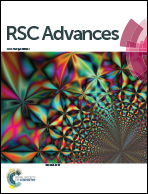Pairing double hybrid functionals with a tailored basis set for an accurate thermochemistry of hydrocarbons†
Abstract
A collection of five challenging datasets, including noncovalent interactions, reaction barriers and electronic rearrangements of medium-sized hydrocarbons, has been selected to verify the robustness of double-hybrid functionals used in conjunction with the small DH-SVPD basis set, especially developed for noncovalent interactions. The analysis is completed by other, more standard functionals, for a total of 17 models, including also empirical corrections for dispersion. The obtained results show that the chemical accuracy threshold, that is an error lower than 1.0 kcal mol−1, can be obtained by pairing the nonempirical PBE-QIDH functional with the DH-SVPD basis set, as well as by other semi-empirical functionals, such as DSD-PBEP86, using larger basis sets and empirical corrections. More in general, a significant improvement can be obtained using the DH-SVPD basis set with DHs, without resorting to any empirical corrections. This choice leads to a fast computational protocol that, avoiding any empirical potential, remains on a fully quantum ground.



 Please wait while we load your content...
Please wait while we load your content...